The Seven Species Of Sea Turtles Living In The Oceans Of Our Planet
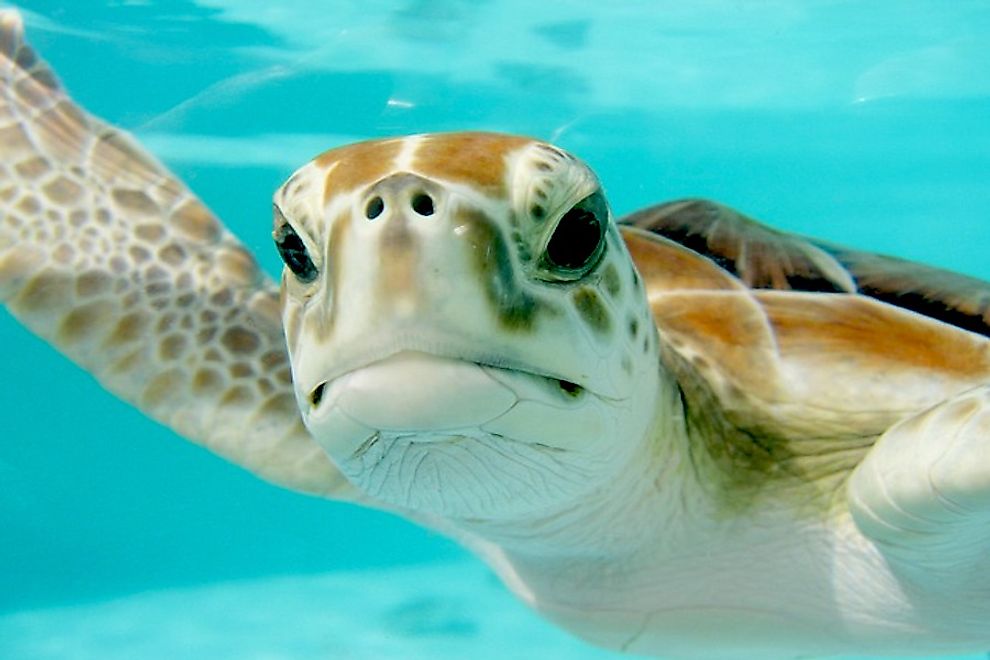
Sea turtles, also known as the marine turtles, are reptiles belonging to the order Testudines. There are currently seven extant species of sea turtles, listed below.
7. Flatback Turtle
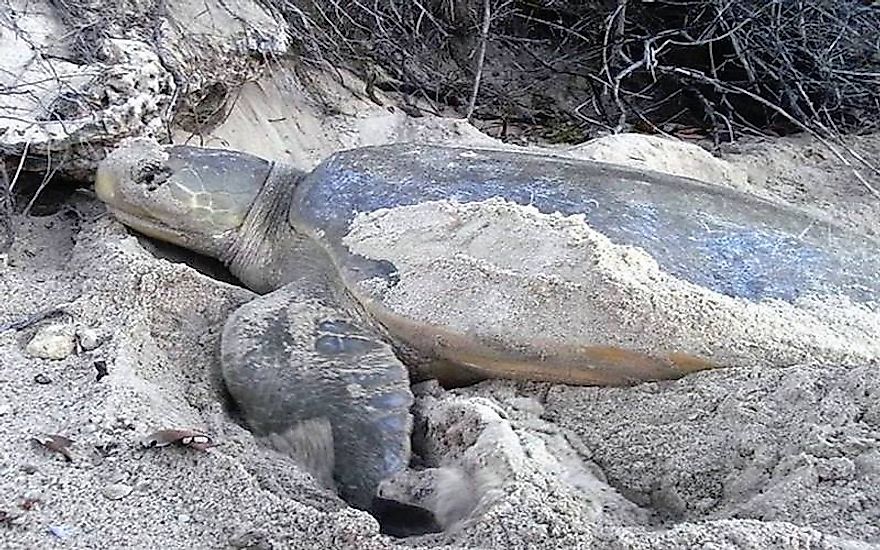
The flatback sea turtle (Natator depressus) is found in the coastal waters and sandy beaches of Australia. It has the smallest range of all marine turtle species. These turtles are olive green to gray in color while the ventral surface is cream-colored. The flatbacks are called so because of their relatively flat shell compared to other marine turtle species. The turtles have a length ranging from 76 to 96 cm and weight ranging between 70 and 90 kg. They live in bays, lagoons, grassy areas, estuaries, and other places with a soft-bottomed sea bed in the coastal waters of Australia. The turtles are omnivorous by nature and feed on soft corals, jellyfish, shrimp, sea cucumbers, seagrasses, etc. The flatback sea turtles face fewer threats imposed by humans due to their restricted habitat which makes them less vulnerable to being caught as bycatch. Demand for their meat and eggs also is mostly absent. They are also well-protected within their range. The primary threat to these turtles comes from predation by feral dogs, pigs, and foxes on shore. Sharks, small crocodiles, birds, and crabs might also attack the hatchlings while they move towards the sea after hatching takes place.
6. Leatherback Turtle
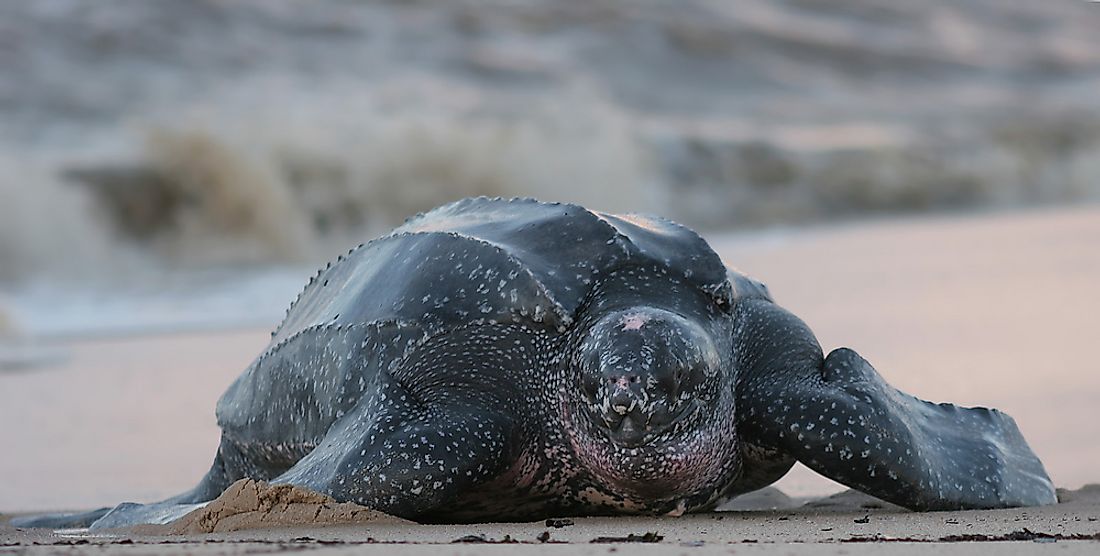
Leatherback turtles (Dermochelys coriacea) are named so for their hard, leather-like shells. These turtles weigh around 600 to 1,500 pounds and are about 55 to 63 inches long. The turtles are classified as vulnerable by the IUCN. These turtles are the largest of all sea turtles. They also migrate the most and cross both the Pacific and the Atlantic Oceans. Despite their wide distribution, the leatherback turtles are few in number as their eggs are over-harvested for trade in illegal markets. In Malaysia, the harvesting of leatherback eggs has rendered the species locally extinct. Tens of thousands of eggs have been removed and adults killed in Southeast Asia. The turtles exclusively feed on jellyfish, helping to keep the jellyfish population in control. Often, they mistakenly consume plastic floating in the ocean which might be lethal for them. Leatherback turtles are also caught accidentally on longline hooks, fishing gillnets, and shrimp trawl nets. Since these turtles need to surface to breathe, such traps kill them by drowning. Unregulated coastal development and rise in sea-level also threaten the turtles in their habitat.
5. Loggerhead Turtle
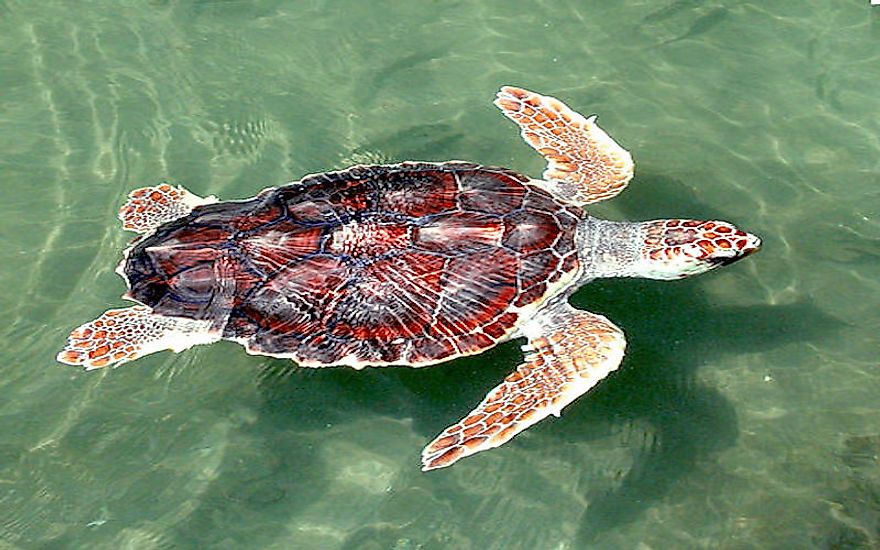
The loggerhead turtle (Caretta caretta) is a marine turtle species that is classified as vulnerable by the IUCN. These turtles weigh between 175 and 400 pounds and their length varies between 33 to 48 inches. The turtles receive their name from their large heads that support the powerful jaw muscles of the turtle. The muscles allow the turtles to easily crush the hard-shelled sea urchins and clams upon which they feed. The turtles are common along the Mediterranean coast where they can be observed on several beaches. However, tourism in the region has disturbed the nesting habitats of these turtles in a major way. The shells of the loggerhead turtles act as an important habitat for colonies of small animals and plants. Interestingly, more than 100 species of parasitic organisms and 37 species of algae live on the shells of the loggerhead. The turtles’ habit of crushing their prey also recycles important nutrients and helps maintain the sediment balance of the ocean. The loggerhead turtles are threatened due to habitat loss and are also being killed as fisheries bycatch.
4. Olive Ridley Turtle
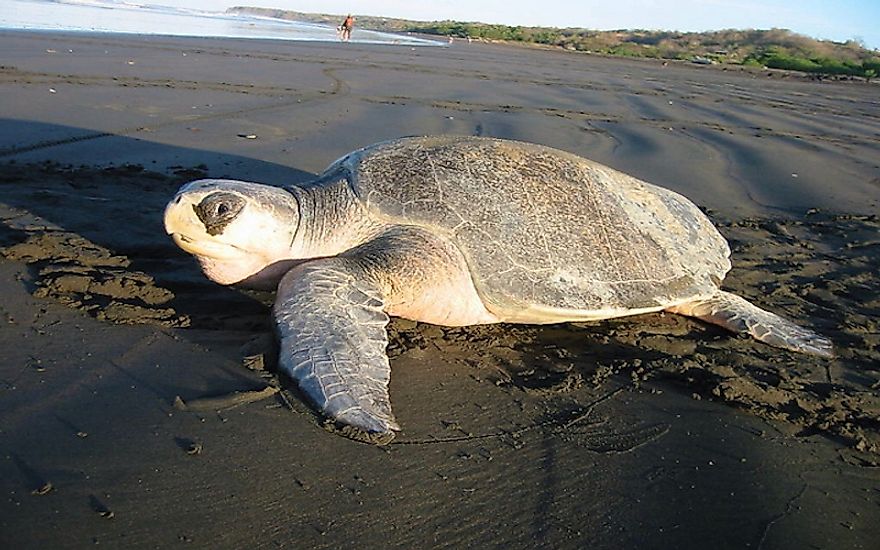
The olive ridley turtle (Lepidochelys olivacea) is named so for the olive green hue of its shell. The turtles weigh anywhere between 75 to 110 pounds and has a length that varies between 24 and 28 inches. The olive ridleys are the smallest among sea turtles and also the most abundant among them. However, the species is classified as vulnerable since it has a very limited nesting habitat which if disturbed might lead to disastrous consequences for the turtle population. Sea level rise due to changing climates could destroy the nesting habitats of this species. Olive ridleys are not only an important part of the marine food web but also serve as a kind of refuge for the sea birds by allowing these birds to perch on their shells as they surface to bask in the sun.
3. Green Turtle
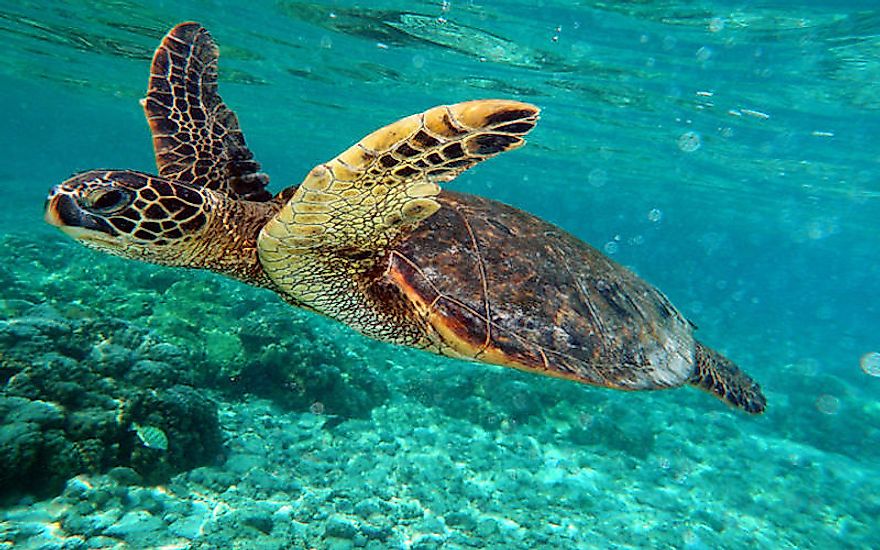
The green turtle (Chelonia mydas) is one of the biggest species of sea turtles on the Earth. It is the only known herbivore species among the sea turtles. The turtles weigh between 150 to 400 pounds and have a length ranging between 31 and 47 inches. The name of the turtle is derived from the greenish color of their fat and cartilage. The animals are found in the subtropical and tropical waters of the world. These turtles also migrate long distances between their nesting grounds and feeding habitats. On the way, they are often subjected to being trapped as bycatch. The eggs of the turtles are also overharvested. Illegal trade of turtle body parts is also prevalent. The green turtles feed on algae and seagrasses and the seagrass digested and excreted by these turtles is available as recycled nutrients to numerous marine species depending on them. Due to the severe threats facing the green turtle populations, and their rapidly decreasing numbers, the species is classified as "endangered" by the IUCN.
2. Kemp's Ridley Turtle
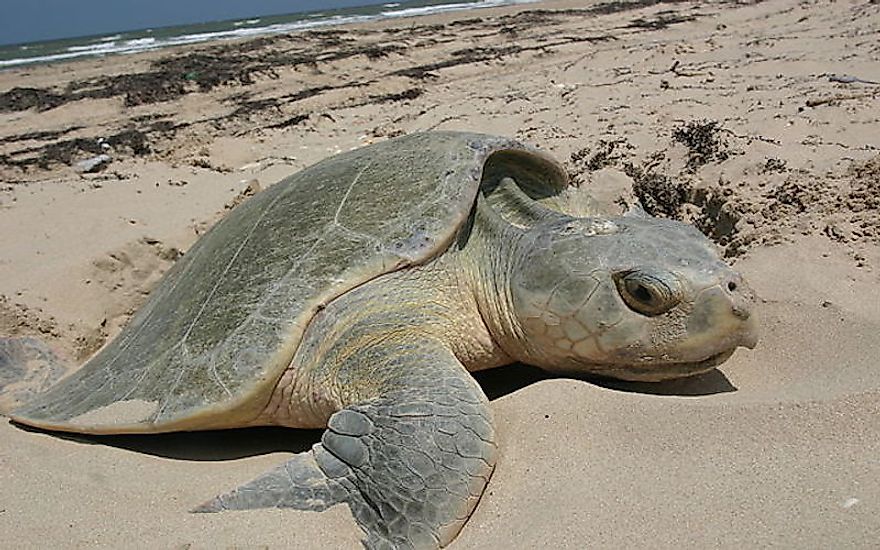
The Kemp's ridley sea turtle (Lepidochelys kempii) is a critically endangered species of sea turtle, the rarest among all. The turtles are small in size with a length of about 22 to 27 cm and a weight of around 79 to 99 pounds. The adults have an oval carapace that is olive-gray in color. The turtles primarily feed on crabs and is a benthic feeder (meaning they feed near the seabed). Mollusks, jellyfish, fish, algae, seaweeds constitute their food base. These turtles prefer to live in warm waters and their range includes the Atlantic Ocean and the Gulf of Mexico. The turtles nest between April and August. During this time hundreds of females synchronously flock to the nesting beaches exhibiting a phenomenon called the “arribada.”
1. Hawksbill Turtle
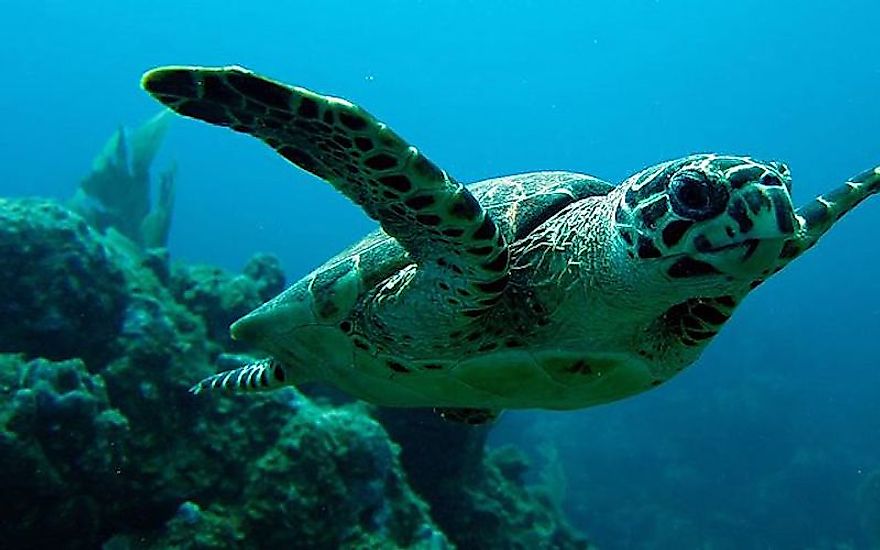
The hawksbill turtle (Eretmochelys imbricata), a critically endangered species, is a marine turtle in immediate need of conservation. The turtles weigh between 90 and 150 pounds and have a length of about 30 to 35 inches. These animals are named so for their pointed and narrow beaks. They have unique patterned and colored shells. This trait makes them attractive targets for poaching since the “tortoiseshell" sells at high prices in the illegal market. The hawksbill turtle inhabits the tropical oceans of the world with a higher concentration in coral reefs where they feed on sponges wedged between the branching coral reefs. The turtles play a significant role in maintaining the health of the reefs. They help remove the sponges from the reef allowing the reef fish to get better access to the reef interiors. The turtles also have great tourism and cultural value. The hawksbill turtles are threatened by indiscriminate egg collection, pollution, poaching for shells, illegal pet trade, loss of nesting habitats, coastal developmental activities, and fishery-associated mortalities.
The Seven Species Of Sea Turtles Living In The Oceans Of Our Planet
| Rank | Species Of Sea Turtle | IUCN Redlist Status |
|---|---|---|
| 1 | Green | Endangered |
| 2 | Loggerhead | Vulnerable |
| 3 | Kemp's ridley | Critically Endangered |
| 4 | Olive ridley | Vulnerable |
| 5 | Hawksbill | Critically Endangered |
| 6 | Flatback | Data Deficient |
| 7 | Leatherback | Vulnerable |











